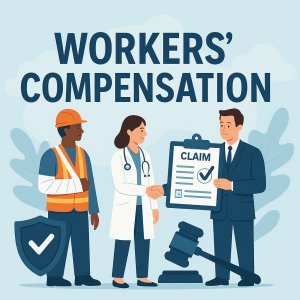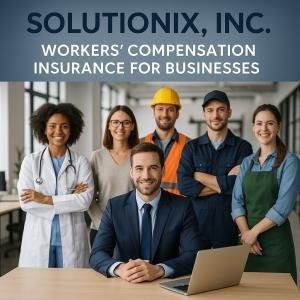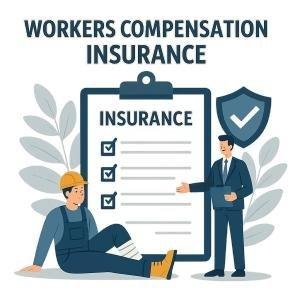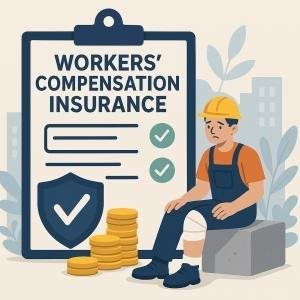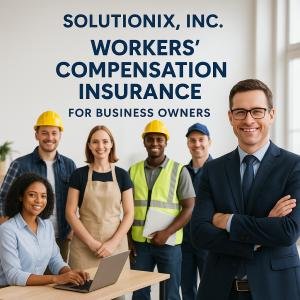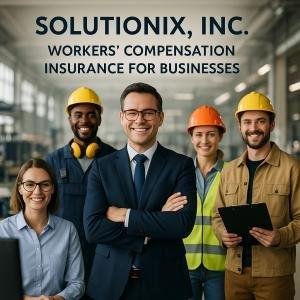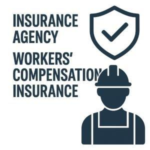
Real-Time Safety Alerts: Reducing Workers Comp Incidents on the Spot
September 6, 2025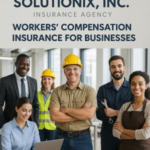
High-Risk Security Operations in Georgia: Winning Your Workers’ Comp Approval
September 6, 2025In the dynamic environment of high-rise buildings, security guard professionals play a critical role in ensuring safety and maintaining order. Though, the nature of their work in these vertical spaces presents distinct occupational hazards that demand specialized attention in the realm of workers’ compensation. Understanding the unique challenges faced by security guards in high-rise settings is essential for employers, insurers, and risk managers alike to effectively address injury risks, streamline claims processes, and implement targeted safety measures. This article explores the complexities of workers’ compensation specific to security personnel operating within high-rise buildings, highlighting the factors that set these environments apart and offering insights into best practices for mitigating risks.
Table of Contents
- Understanding the Physical and Environmental Hazards in High-Rise Security Work
- Addressing Mental Health Concerns and Stress Management for Security Personnel
- Implementing Customized Safety Protocols and Training Programs
- Leveraging Technology to Enhance Worker Protection and Emergency Response
- Q&A
- The Way Forward
Understanding the Physical and Environmental Hazards in High-Rise Security Work
High-rise security workers face a distinct set of physical challenges that significantly increase the risk of workplace injuries. Navigating narrow stairwells, managing emergency evacuations from elevated floors, and handling equipment at dizzying heights create unique strain and hazards. Prolonged exposure to harsh weather, including heavy winds or extreme temperatures at upper levels, further compounds these risks. Additionally, the confined spaces and tight security checkpoints demand constant vigilance, often resulting in fatigue and heightened susceptibility to slips, trips, and falls.
these environmental factors extend beyond mere discomfort, playing a critical role in claims related to workers’ compensation. Key hazards include:
- Elevated fatigue: due to incessant stair climbing and patrolling large vertical areas.
- Exposure to hazardous weather conditions: especially on rooftop or balcony assignments.
- Limited access routes: complicating emergency response and evacuation.
- Ergonomic stress: from repetitive tasks in confined spaces.
| Hazard Type | Common Risks | Preventive Measures |
|---|---|---|
| Physical Strain | Muscle fatigue, slips, falls | Ergonomic training, regular breaks |
| Weather Exposure | Heat/cold stress, wind hazards | Weather-appropriate gear, shift adjustments |
| Restricted Access | Delayed evac., emergency complications | Clear evacuation protocols, dialogue systems |
Addressing Mental Health Concerns and Stress Management for security Personnel
security personnel working in high-rise buildings face distinct mental health challenges due to the nature of their environment-frequently enough isolated workstations, prolonged periods of vigilance, and exposure to potential emergencies such as fires or unauthorized access attempts. These stressors contribute to increased risks of anxiety, burnout, and post-traumatic stress disorder (PTSD). It is essential for employers to implement extensive mental health support systems including regular counseling sessions, access to stress management resources, and peer support groups.Offering structured breaks and fostering an open communication culture further empower guards to share concerns without stigma,enhancing overall resilience and job satisfaction.
Effective stress management strategies tailored to security personnel should prioritize both prevention and response. Consider integrating the following best practices to maintain psychological well-being:
- Mindfulness and relaxation techniques: Workshops on breathing exercises and meditation help reduce acute stress levels.
- Physical fitness programs: Encouraging regular exercise boosts mood and combats fatigue.
- Clear incident reporting protocols: Transparent procedures minimize uncertainty after critical events and facilitate timely interventions.
- Access to professional mental health resources: Confidential counseling and crisis hotlines provide vital support when needed.
| Stress Factor | Recommended Intervention | Expected Outcome |
|---|---|---|
| Isolation during shifts | Peer communication platforms | enhanced social support,reduced loneliness |
| Emergency response pressure | Regular simulation drills | Improved confidence and stress reduction |
| High vigilance demand | Scheduled mental breaks | Increased focus and decreased fatigue |
Implementing Customized Safety Protocols and Training Programs
Security teams operating in high-rise environments must adopt tailored safety measures that address the distinct risks associated with vertical workspaces. Standard protocols might overlook critical factors such as elevator entrapments,rooftop hazards,and emergency evacuation complexities. By conducting comprehensive hazard assessments specific to each building, management can develop customized training programs that emphasize situational awareness, fall prevention, and coordination with emergency responders. This targeted approach ensures that guards are not only prepared for general threats but also equipped to navigate the structural nuances of skyscrapers confidently.
Implementation of these unique safety protocols often involves regular,scenario-based drills designed to simulate emergencies like fires or power outages at various levels of the building.Incorporating modern technology-such as virtual reality (VR) training modules-can enhance learning outcomes by providing immersive, hands-on experiences. Organizations might also benefit from establishing clear communication hierarchies and checklists that outline specific responsibilities during incidents. below is a simplified example of essential training components for high-rise security personnel:
| Training Component | Focus Area | Objective |
|---|---|---|
| Evacuation Procedures | Emergency Exits & Stairwells | Swift, safe occupant evacuation |
| Fall Hazard Prevention | Roof Access & Window Cleaning Zones | Minimize fall-related injuries |
| Elevator Emergency Response | Entrapments & Power Outages | Effective rescue and communication |
| Fire Safety & Suppression | Alarm Systems & Fire Extinguishing | Rapid response to fires |
Leveraging Technology to Enhance Worker protection and Emergency Response
Modern technology is revolutionizing the way security personnel operate in high-rise environments, significantly improving worker safety and streamlining emergency response processes. Advanced surveillance systems equipped with AI-powered analytics enable real-time threat detection and rapid communication, minimizing reaction time. Wearable devices, such as GPS trackers and health monitors, allow supervisors to maintain continuous oversight of guard location and physical condition, ensuring immediate assistance if abnormal signs or emergencies arise. Additionally, mobile apps facilitate instant alerts and coordination among emergency teams, reducing risks inherent in high-altitude security operations.
Key technological tools include:
- Cloud-based incident reporting platforms for efficient documentation and follow-up
- Integrated communication systems linking guards, building management, and first responders
- Automated access control enhanced with biometric verification for restricted zones
- Smart helmets and body cameras supporting hands-free communication and evidence collection
| Technology | Benefit | impact on Worker Safety |
|---|---|---|
| AI Surveillance | Real-time threat detection | Reduces delayed responses |
| Wearable Health Monitors | Continuous health tracking | Swift alerts for distress signals |
| Mobile Emergency Apps | Instant communication | Improves coordination during crises |
| Biometric Access Control | Secures sensitive areas | Prevents unauthorized access |
Q&A
Q&A: Security Guard Workers’ Comp for High-Rise Buildings – Unique Challenges
Q1: Why do security guards working in high-rise buildings face unique workers’ compensation challenges?
A1: Security guards in high-rise buildings encounter distinct risks compared to other environments, including exposure to confined elevator shafts, emergency evacuations at notable heights, and heightened interaction with diverse occupant populations.These factors increase the likelihood of injuries that may be severe or complex, necessitating specialized workers’ compensation considerations.
Q2: What types of injuries are most common for security guards in high-rise settings?
A2: Common injuries include slips,trips,and falls on stairs or slippery surfaces; injuries sustained during emergency response or evacuation procedures; repetitive strain injuries from long periods of standing or patrolling; and potential harm from confrontations or assaults within crowded or confined areas of the building.
Q3: How does the vertical nature of a high-rise building impact workers’ compensation claims?
A3: The vertical layout introduces unique risks such as falls from significant heights, accidents involving elevators or stairways, and difficulties in emergency evacuations. These risks can lead to more severe injuries, complicating claims and increasing medical costs. Insurers may require more detailed incident investigations to assess liability accurately.
Q4: What preventive measures can reduce the risk of workers’ compensation claims for security guards in these environments?
A4: Employers can implement comprehensive safety training tailored to high-rise complexities, enforce strict elevator and stairwell safety protocols, provide ergonomic equipment and regular breaks to prevent fatigue, and establish clear emergency procedures. Regular risk assessments and incident reporting further help mitigate potential hazards.Q5: How can insurance providers tailor workers’ compensation policies for security personnel in high-rise buildings?
A5: Insurers can develop specialized coverage that accounts for high-rise-specific hazards, offer risk management consultations, and provide employee wellness programs.flexible claims management processes that address the complexity of injuries typical in these environments can enhance claim resolution efficiency.
Q6: What role does communication play in managing workers’ comp risks for high-rise security guards?
A6: Effective communication is critical in ensuring that security guards are fully aware of safety procedures, reporting mechanisms, and the proper use of protective equipment. Regular updates and feedback loops between employees, management, and insurers help promptly address potential hazards and reduce injury occurrences.
Q7: How do regulatory requirements affect workers’ compensation for high-rise security workers?
A7: Compliance with occupational safety regulations, building codes, and industry standards is essential to minimize liability. Regulatory bodies may impose stricter safety mandates for high-rise environments, influencing how workers’ compensation claims are adjudicated and impacting employer responsibilities.
Q8: What should employers consider when selecting workers’ comp insurance for high-rise security staff?
A8: Employers should evaluate insurers’ experiance with high-rise safety risks, claims handling efficiency, and the availability of tailored loss prevention resources. ItS critically important to choose policies that cover both physical injuries and potential mental health issues stemming from high-stress incidents common in these settings.
This Q&A provides a comprehensive overview of the unique challenges faced in workers’ compensation for security guards in high-rise buildings, emphasizing risk management, insurance considerations, and regulatory compliance.
The Way Forward
security guards working in high-rise buildings face a distinct set of challenges that directly impact their workers’ compensation considerations. Understanding the complexities of their work environment-from vertical mobility risks to emergency evacuation protocols-is essential for employers and insurers aiming to provide comprehensive coverage and support. By addressing these unique factors proactively, organizations can enhance workplace safety, minimize injury-related costs, and ensure that security personnel receive the protection and care they deserve. Prioritizing tailored workers’ compensation strategies not only safeguards the well-being of security guards but also reinforces overall operational resilience within high-rise settings.
“This content was generated with the assistance of artificial intelligence. While we strive for accuracy, AI-generated content may not always reflect the most current information or professional advice. Users are encouraged to independently verify critical information and, where appropriate, consult with qualified professionals, lawyers, state statutes and regulations & NCCI rules & manuals before making decisions based on this content.

